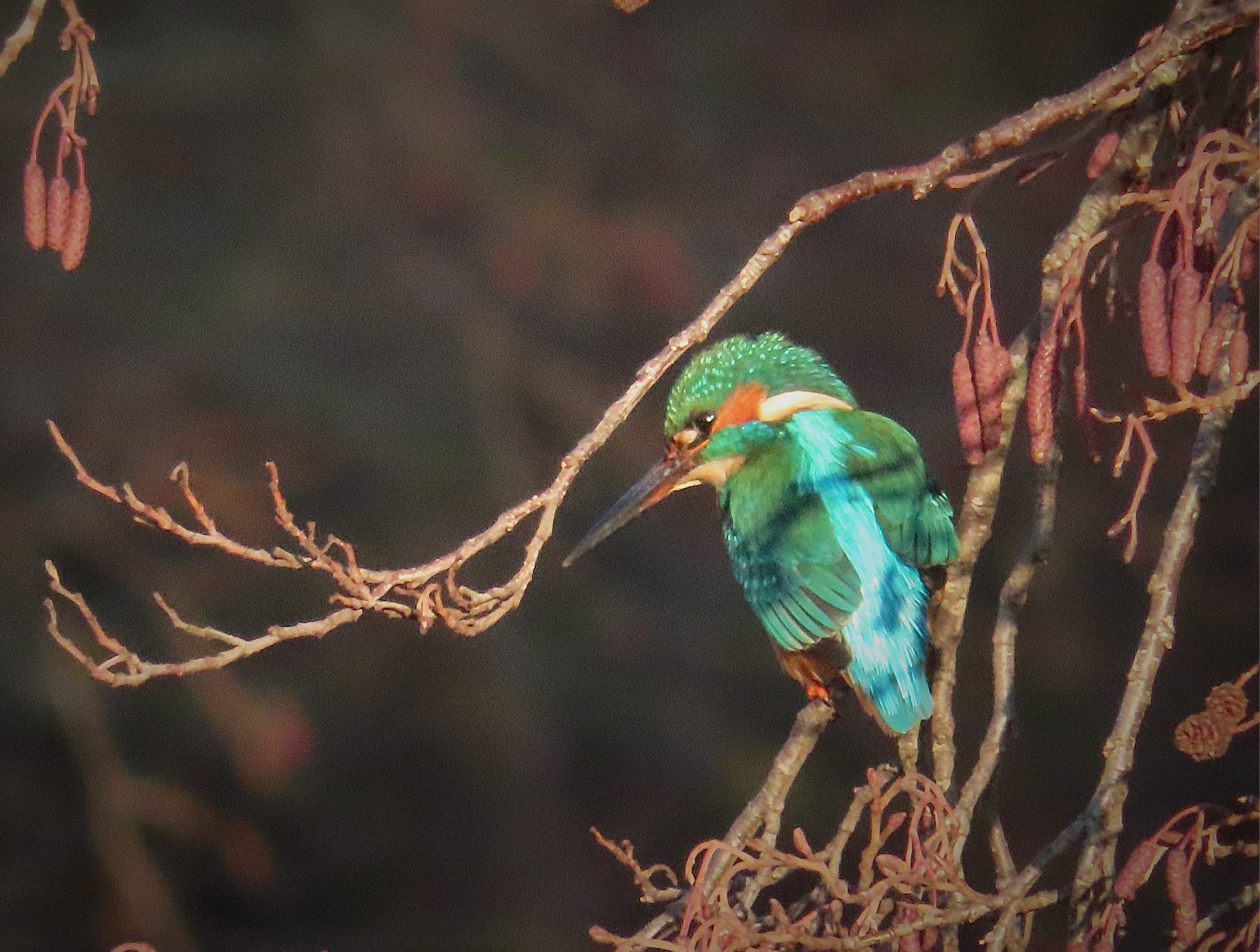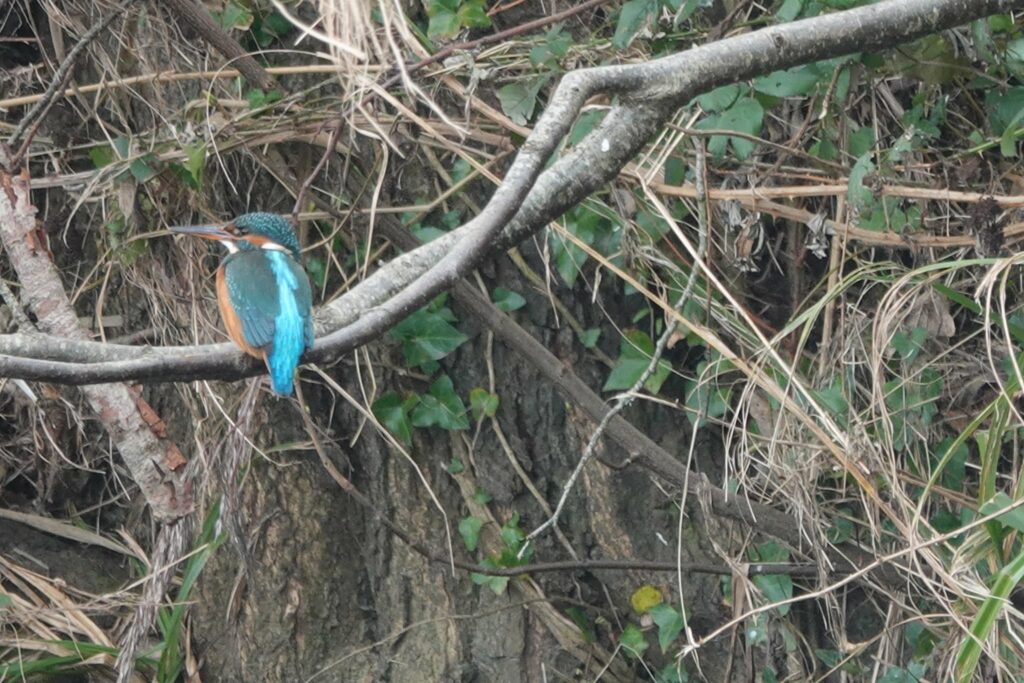Kingfisher

Kingfishers are small metallic bright blue and orange birds.
The Kingfisher’s beak is long and black. The sexes are very similar but the females have a red patch at the base of the lower beak. With a wingspan of 25cm and body length of 16cm, a kingfisher is only slightly larger than a robin. They fly rapidly, low over water, and hunt small fish from riverside perches. They close their eyes as they dive into the water, so they are fishing blind but can accurately judge the depth of the fish before diving. The design of a kingfisher’s beak is aerodynamically efficient, allowing it to dive from its perch, towards its prey, with maximum speed and minimum splash.
A kingfisher pair dig a nest tunnel in vertical, sandy river banks. The nest chamber at the end has a slight depression to prevent eggs rolling out, but no material is brought into the nest. The first clutch of 6-7 eggs is laid in late March. Each chick can eat 12-18 fish a day meaning the adults may catch over 120 fish each day for their brood. Chicks are fed in rotation. Once a chick is fed, it moves to the back of the nest to digest its meal, causing the others to move forward. Once out of the nest, the young are fed for only four days before the adults drive them out of the territory and start the next brood. 2-3 broods are often raised in a breeding season.
Information on Minnows, their staple diet, can be found here.
More information about kingfishers can be found here
5 things you didn’t know about kingfishers can be found here
See the connection between kingfishers and the bullet train here
Main Image




